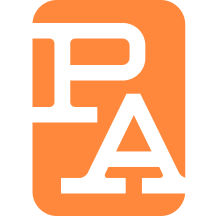How it Works
A Western Medical Perspective
Many theories have attempted to explain how acupuncture works, but no single study has fully explained how acupuncture functions within the framework of Western medicine. The following is a discussion of how acupuncture works from a Western medical perspective.
The quick answer:
In general, acupuncture points are believed to stimulate the central nervous system, which, in turn, releases chemicals into the muscles, spinal cord, and brain. These chemicals either alter the experience of pain or release other chemicals that influence the body’s self-regulating systems. These biochemical changes may stimulate the body’s natural healing abilities and promote physical and emotional well-being.
The long answer:
If you still want to know more, read on. The information below represents some of the current major theories on how acupuncture works:
1. Neurovascular Theory
This theory, proposed by researcher Dr. Donald E. Kendall, represented one of the only peer-reviewed theories on the mechanisms of acupuncture. Inserting a needle into a body creates micro-trauma that sets off a cascade of events. There is a local tissue response and a concurrent stimulation of the nervous system via nocioceptive and proprioceptive fibers. Those signals are integrated locally and in the brain. The brain responds with a descending control signal back down to the site of insertion; several changes can take place including:
- Pain inhibition
- Release of muscle contracture
- Increased blood flow
- Inhibition of autonomic motor fibers also normalizes organ activity
2. Electromagnetic Theory
Evidence suggests that acupuncture points are strategic conductors of electromagnetic signals. Stimulating these points enables electromagnetic signals to be relayed at greater-than-normal rates. These signals may start the flow of painkilling biochemicals, such as endorphins, or release immune system cells to specific body sites.
3. Painkiller Theory
Considerable research supports the claim that acupuncture releases opiods, synthetic or naturally occurring chemicals in the brain that may reduce pain or induce sleep. These chemicals may explain acupuncture’s pain-relieving effects.
4. Stimulation of the hypothalamus and the pituitary gland
Joined at the base of the brain, the hypothalamus and pituitary glands are responsible for many body functions. The hypothalamus activates and controls part of the nervous system, the endocrine processes, and many bodily functions, such as sleep, regulation of temperature, and appetite. The pituitary gland supplies some of the body’s needed hormones. Stimulation of these glands can result in a broad spectrum of effects on various body systems.
5. Change in the secretion of neurotransmitters and neurohormones
Studies suggest that acupuncture may alter brain chemistry in a positive way. This is accomplished by changing the release of neurotransmitters (biochemical substances that stimulate or inhibit nerve impulses) and neurohormones (naturally-occurring chemical substances that can either impact the activity of or change the structure or function of a body organ).
Find out what acupuncture can treat or contact Peninsula Acupuncture with any questions.
